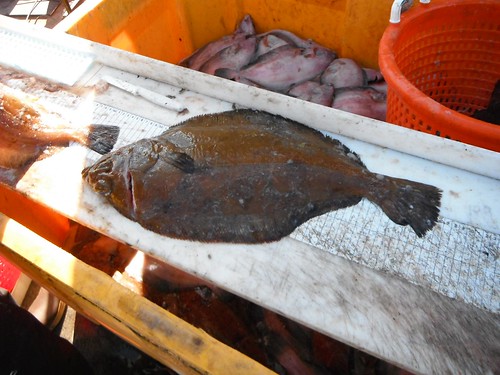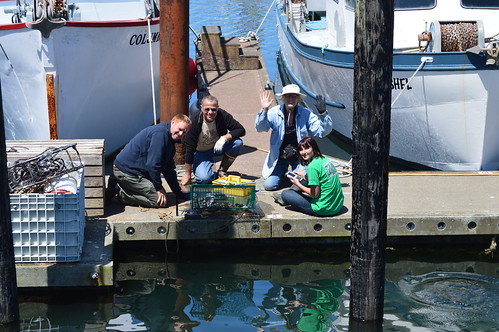This weekend was an exciting one, with a trip to Corvallis for my fellow Sea Grant Scholars and I. Corvallis was playing host to a science and arts festival called da Vinci Days . What makes this festival stand out from the other science and art festivals is that it is meant to remind people, especially artist and scientists, that the two pursuits are intertwined. One of the demonstrations that the festival featured to do this was by having community built kinetic sculptures. Kinetic sculptures are sculptures, pieces of art, which using the power of science are designed to be moved by human motion and in the case of da Vinci Days to race over obstacles.
Oregon Sea Grant also had a booth at the festival which my fellow scholars and I had the privilege to work. For me it was a great opportunity to reach out and discuss rockfish conservation issues with the festival goers. Before arriving in Corvallis I was asked to make a poster describing the work I do and my experience as a summer scholar. The poster was to be hung while I tended the booth on Sunday morning, with the hopes of catching attention and creating an opportunity to engage people in my work. To my delight I found quite a few people attracted to my poster and with whom I was able to engage.
The real highlight of the event though was going with the other Sea Grant scholars to listen to Dr. Jane Lubchenco speak as key not speaker for the festival. As the former director of NOAA, she spoke about how Washington D.C and politics interact with environmental issue and how important it is for scientists to communicate their science in a manner that is easy to understand. She also spoke to and demonstrated how the art of narrative story telling can easy the barriers to communicating science. She did this by relaying her experiences as the director of NOAA in a series of short story, which she collectively titled Dr. Jane goes to Washington.
I am very lucky and appresiative of Oregon Sea Grant to have had the opportunity to attend the 2013 da Vinci Days festival and left more inspired and determined than ever.


















